Six Bar Angelfish
$69.99
-
Select Variant
Six Bar Angelfish can also be called the Sixbanded Angelfish, Six Striped Angelfish, or Six Striped Angelfish. The adult has five dark brown stripes that are nearly equally spaced on its pale-tan body. The sixth stripe, which is just below the eye, is white. The entire body is covered in dark blue polka dots, and vibrant sapphire-blue dots the caudal fin as well as the back section of the anal fin.
Divers and aquarists know the banded angelfish by its distinctive grunting sounds.
Six Bar Angelfish are hermaphroditic, hard to breed and can be distinguished in color from one another. This fish is big and needs a large aquarium that holds 220 gallons or more. The Six Bar Angelfish is not a reef dweller and will nip at soft and stony corals (sessile insects) and clam mantles.
Six Bar Angelfish needs to eat Spirulina, sea algae, high-quality angelfish preparations and mysis, as well as other meaty items. It should be fed three times per day.
Estimated Purchase Size: Juvenile Small: 1" to 1-3/4"; Juvenile Medium: 1-3/4" to 2-1/2"; Juvenile Large: 2-1/" to 3-1/4"; Small: 2" to 3-1/2"; Medium: 3-1/2" to 5"; Large: 5" to 7"
- Description
- Additional Information
- Reviews
Six Bar Angelfish Overview
The Six Bar Angelfish (Pomacanthus sexstriatus) can reach up to 46 cm in length but typically grows to around 30 cm in captivity. The color of the fish changes with age:- Juveniles: Black bodies with blue lines on the head, white semicircle vertical lines behind the eyes, and blue trimming on fins.
- Adults: Creamy background with a black head and a single vertical white stripe behind the eyes. Five vertical dark stripes with small dark dots are present on the flanks. The caudal fin has blue with light blue dots.
Six Bar Angelfish Housing Requirements
- Tank Size: Requires a minimum of a 1500-litre aquarium.
- Tank Setup: Needs a well-established aquarium with ample live rock for grazing.
- Tank Compatibility: Best kept in a fish-only setup. Avoid reef setups as adults may nip at corals.
Six Bar Angelfish Diet and Nutrition
- Diet: Feeds on Nori, Spirulina, small invertebrates like Krill, Mysis, Brine shrimp, sponges, and small crabs.
- Feeding: Juveniles need multiple feedings per day, focusing on a diet with more vegetable content and less meat.
Characteristics and Behavior
- Appearance: Males and females are indistinguishable. Adults have a pale-tan body with five dark brown stripes and a sixth white stripe behind the eyes. Blue polka-dots cover the body, with vibrant sapphire-blue dots on the fins.
- Behavior: Known to grunt when approached and can be shy and difficult to acclimate.
- Breeding: Hermaphroditic and difficult to breed in captivity.
Approximate Purchase Size:
- Juvenile Small: 1" to 1-3/4"
- Juvenile Medium: 1-3/4" to 2-1/2"
- Juvenile Large: 2-1/2" to 3-1/4"
- Small: 2" to 3-1/2"
- Medium: 3-1/2" to 5"
- Large: 5" to 7"
LINKS to follow:
size
Large, Medium, Small
Units
1
Weight
6 lbs
Dimensions
1 × 1 × 1 in

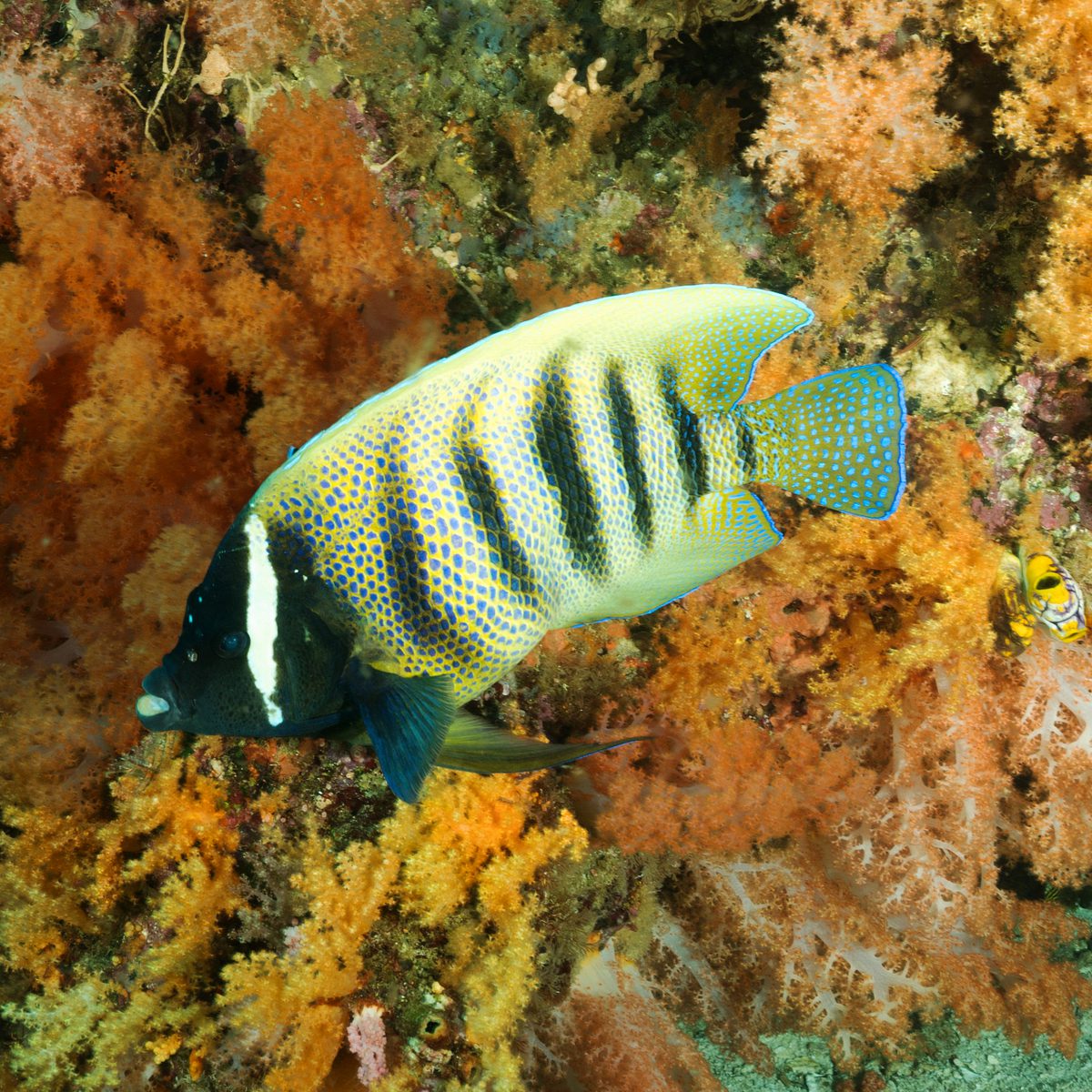
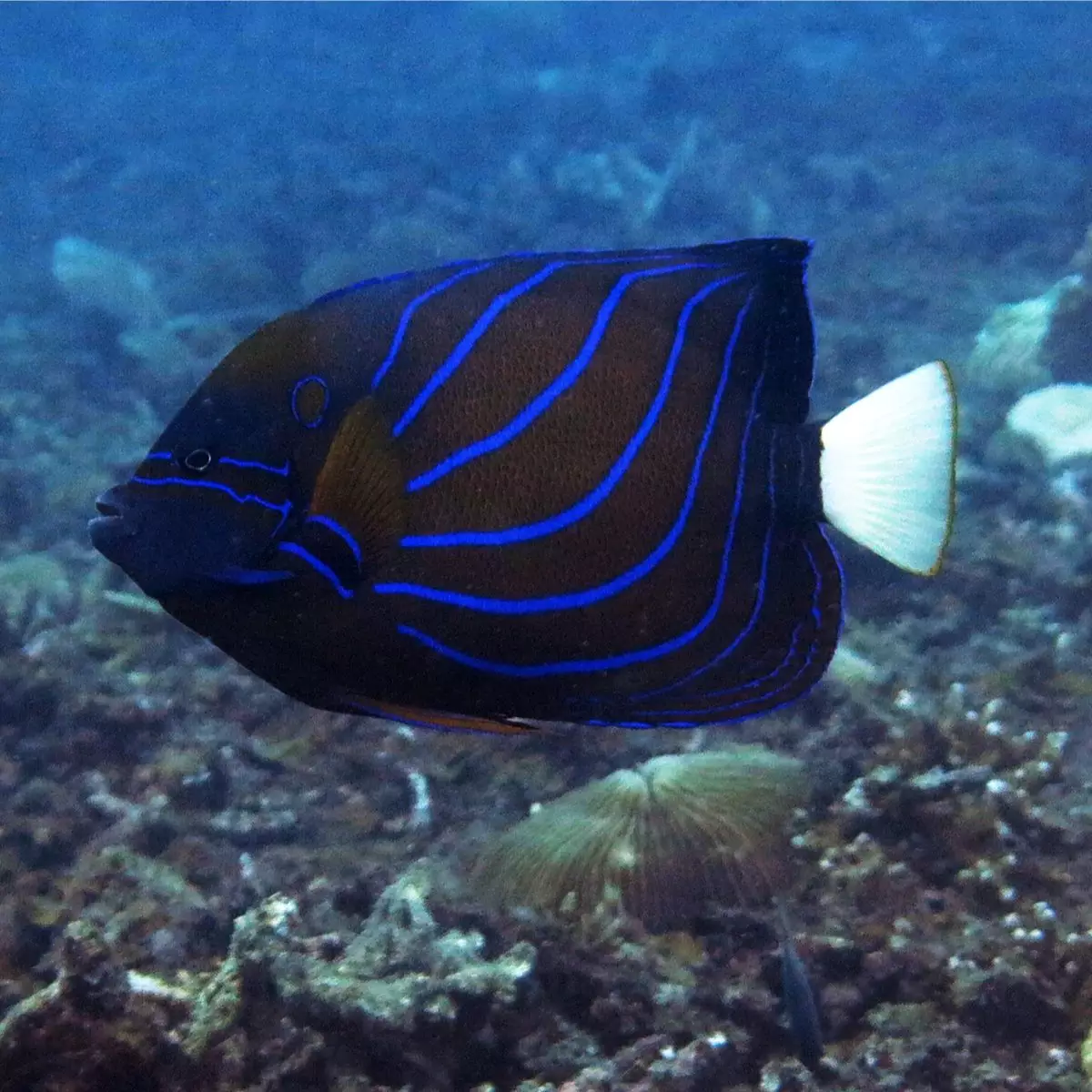

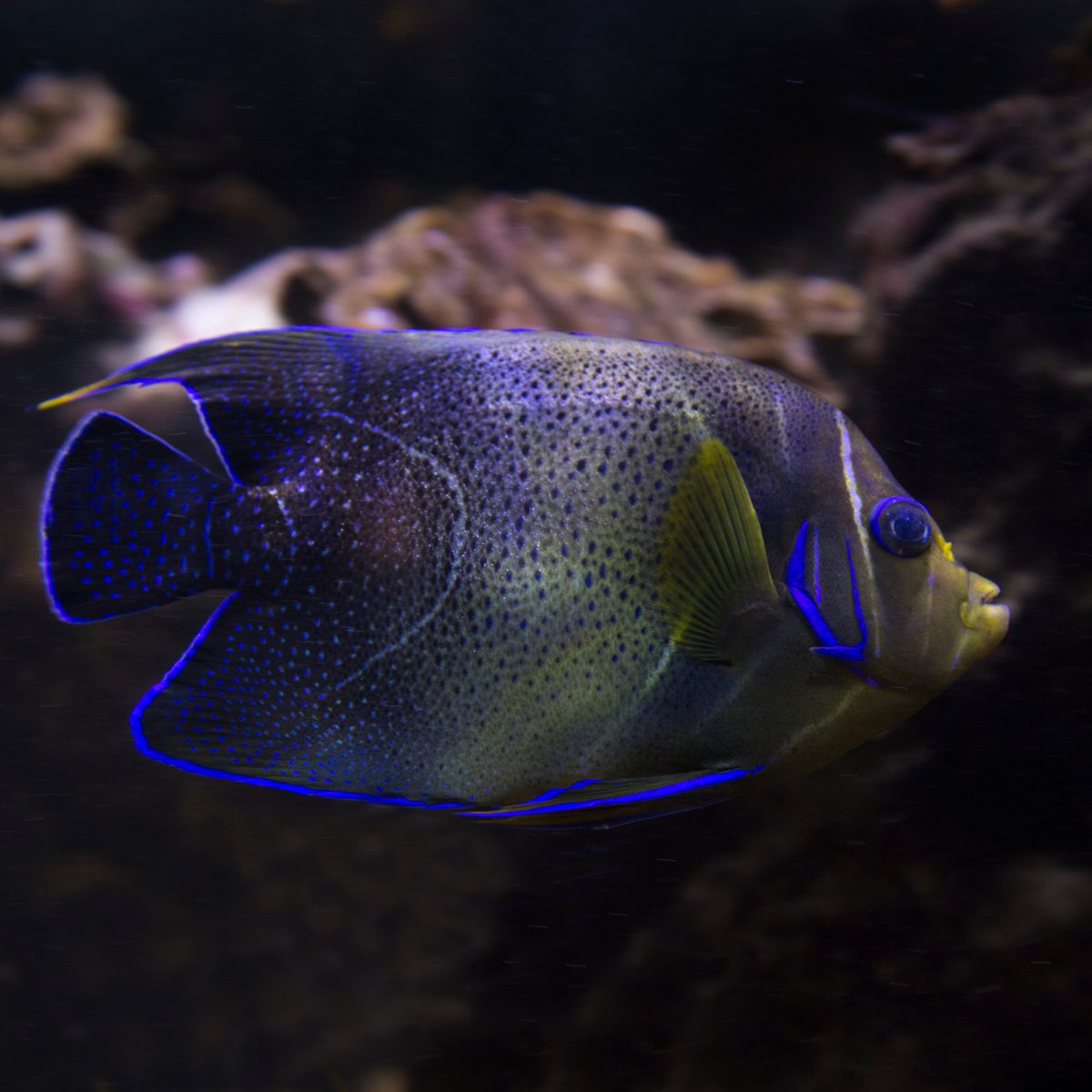
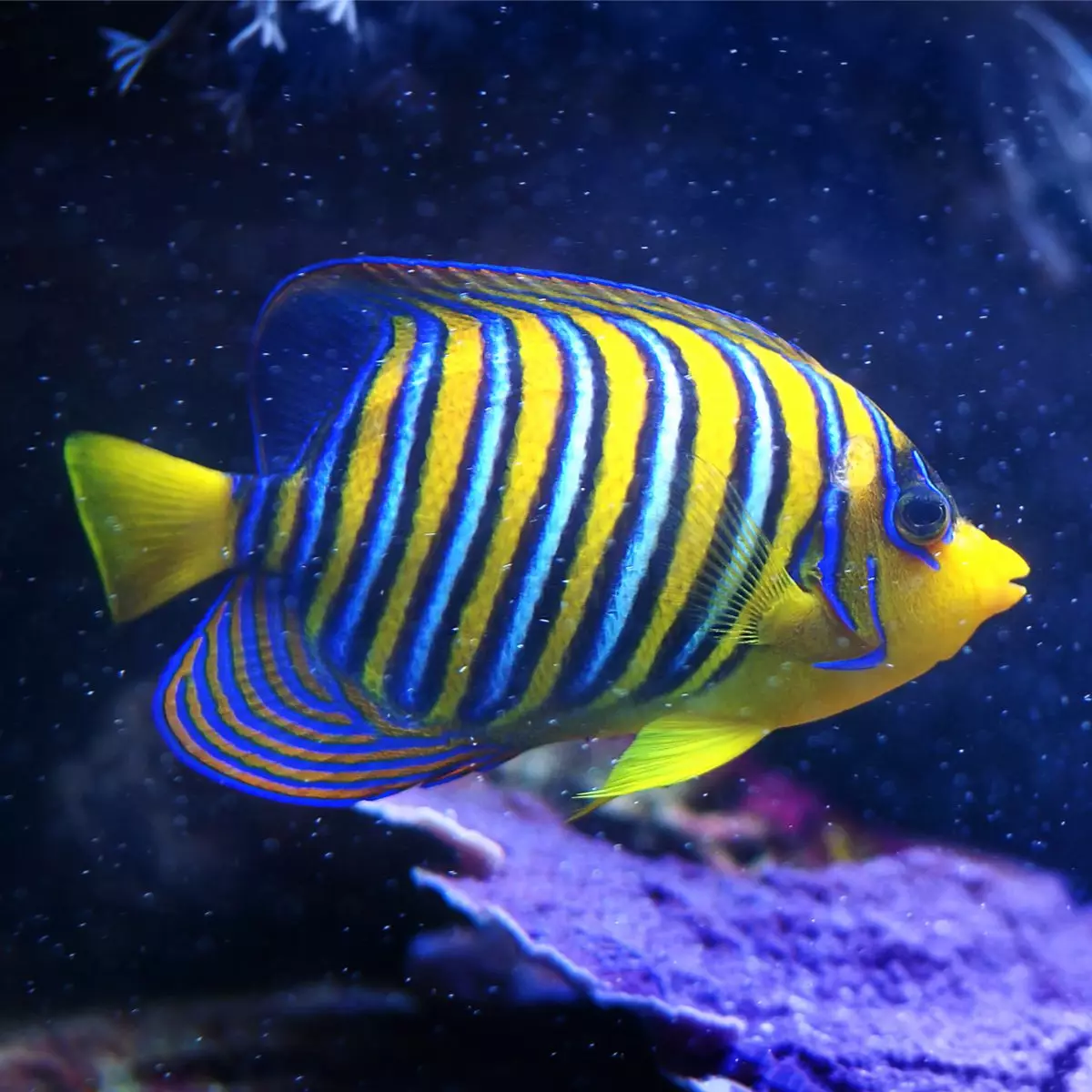
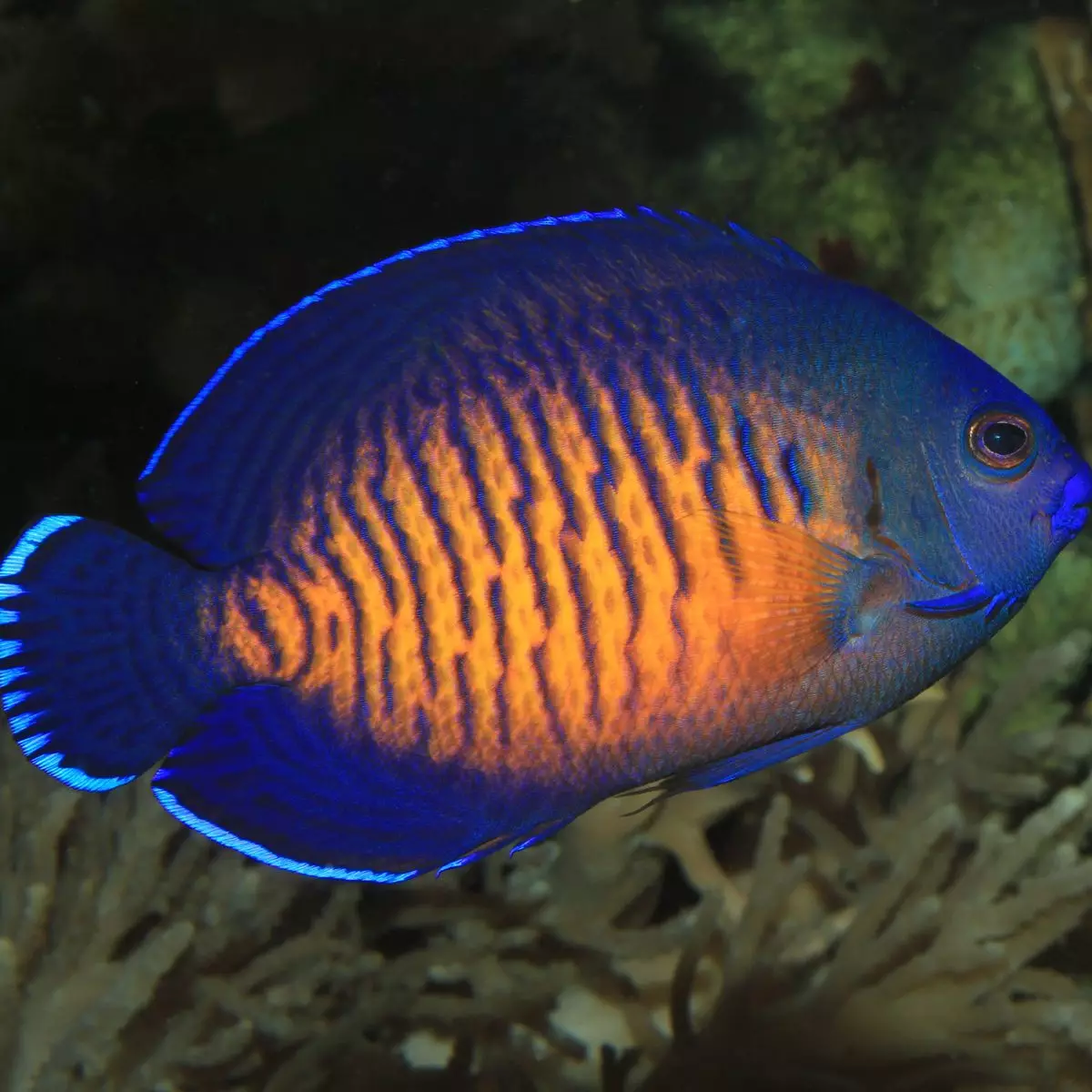

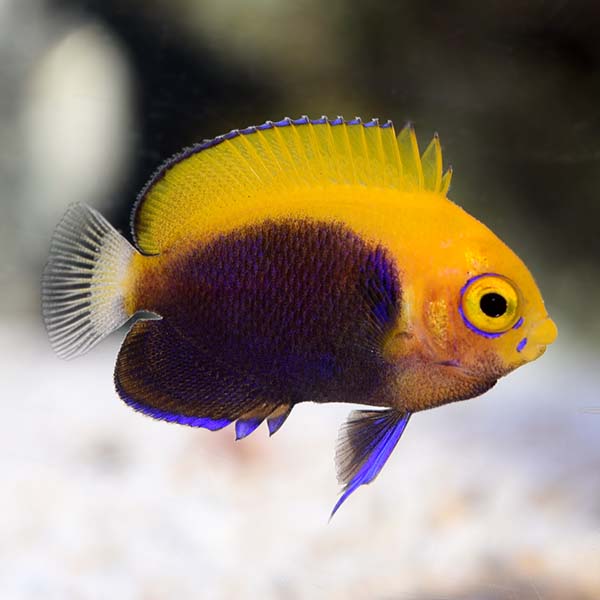
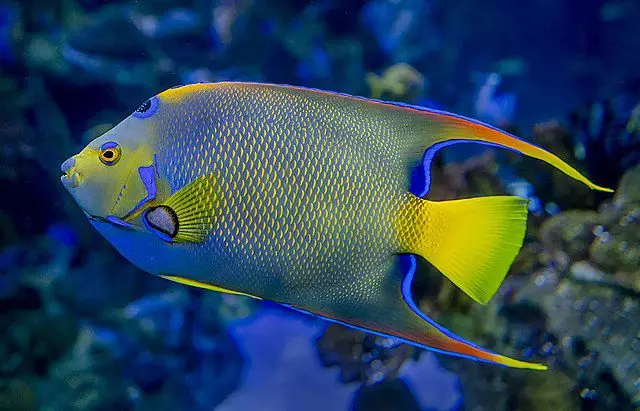
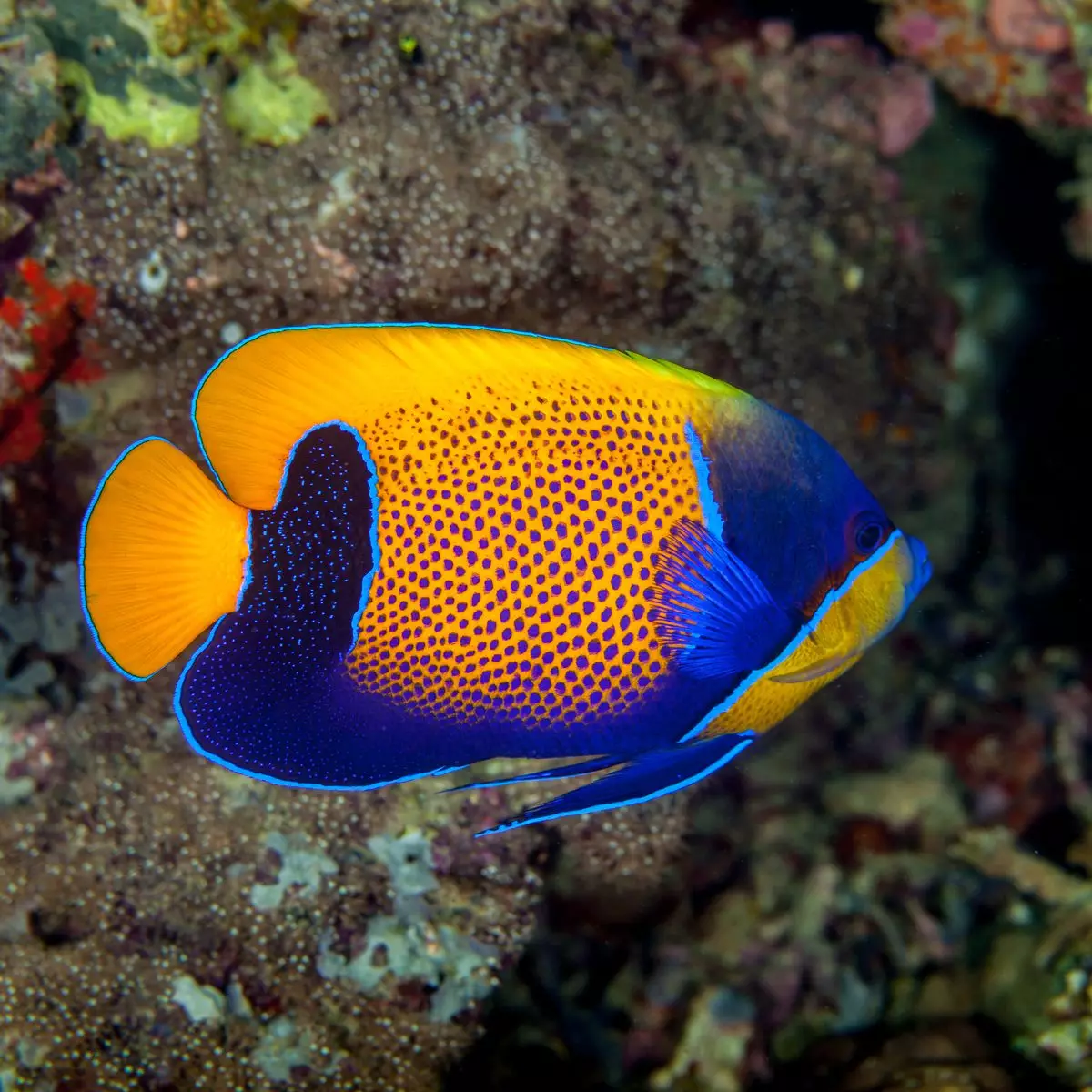
Reviews
There are no reviews yet.